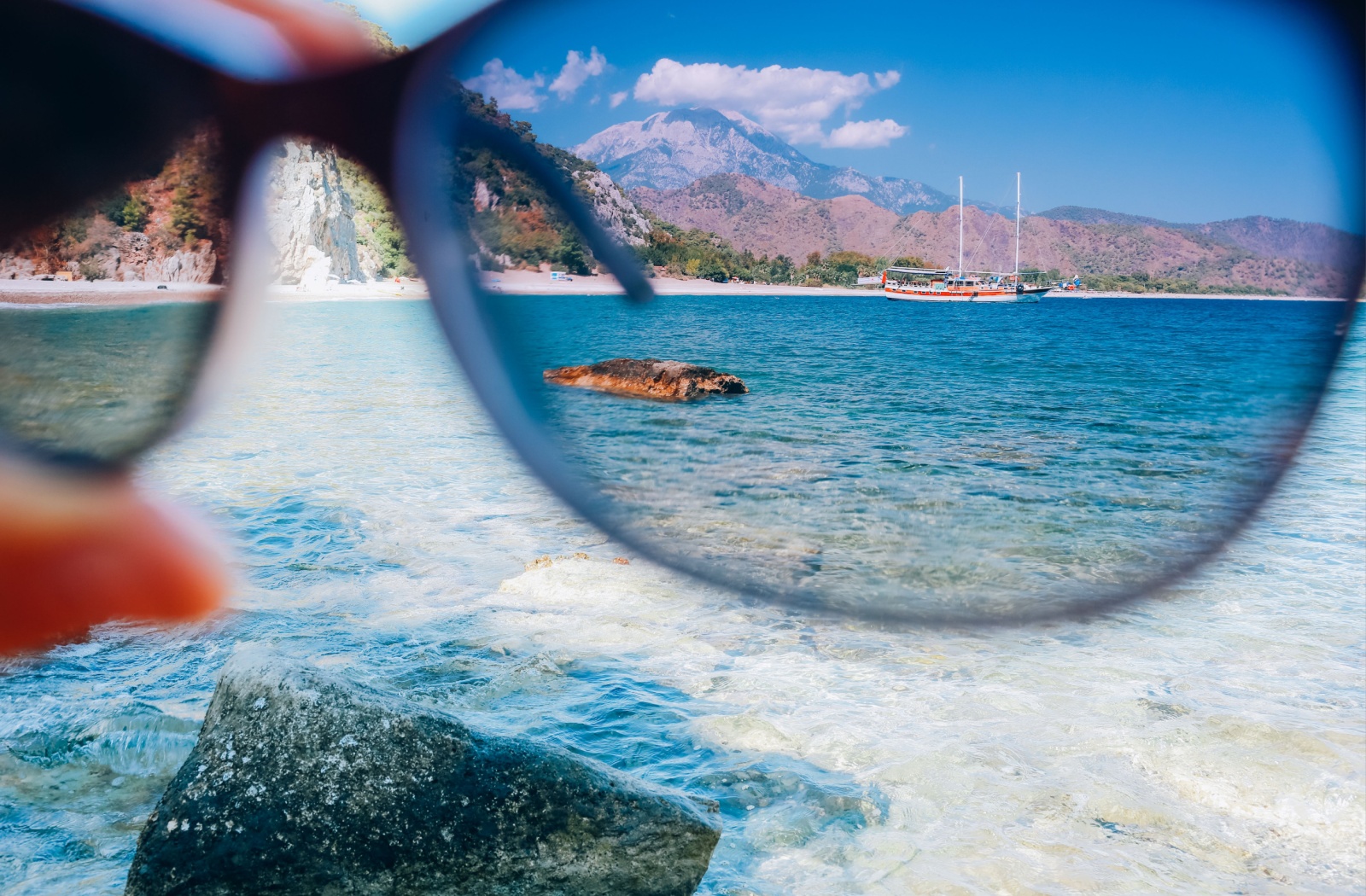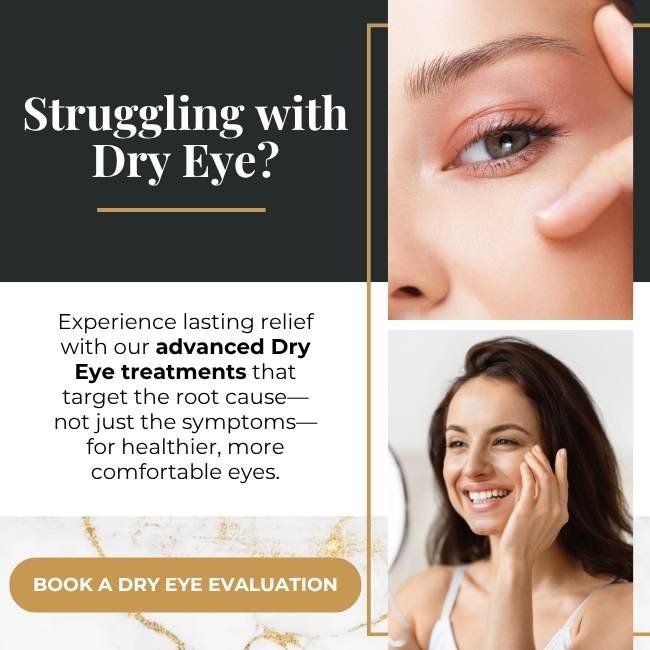Sunglasses are a staple fashion accessory, and good quality sunglasses (with UV protection) should be worn year-round.
It’s not just about wearing glasses with dark-tinted lenses. Quality sunglasses from your optometrist will ensure your sun lenses offer UV protection. What’s more, you can customize your lens with options to reduce glare such as anti-glare coating, mirror coating or polarization.
Polarized sunglasses help reduce glare, improve contrast, and enhance vibrancy, making them perfect for outdoor adventures.
Not all sunglasses are created equal. Here’s how you can tell if sunglasses have polarized lenses:
- The screen test
- The reflection test
- The comparison test
- Checking the manufacturer’s label
Polarized vs Non-Polarized Sunglasses
At their core, sunglasses are designed to reduce light glare and block harmful UV rays, but not every pair is equally good at this job. Here’s what sets polarized lenses apart:
What Are Polarized Lenses?
Polarized lenses have a special chemical filter that blocks horizontal light waves, particularly those reflecting off flat, shiny surfaces like water, roads, and car windshields. This filter reduces glare and eye strain and improves color contrast, enhancing visual clarity.
Reflective surfaces like snow, water, or even shiny surfaces create glare. Snow in particular reflects up to 80% of UV rays, making polarized sunglasses invaluable for winter activities.
While non-polarized lenses might darken your surroundings, they don’t offer the same glare-blocking properties. So, if you enjoy the outdoors through hiking, biking, snowboarding, fishing, or even long road trips, glare from reflective surfaces can make it harder to focus on the task at hand.
Do Polarized Lenses Automatically Provide UV Protection?
Here’s where many people misunderstand polarization.
While polarized lenses reduce glare, this doesn’t necessarily mean they block harmful ultraviolet (UV) rays. Proper sun protection for your eyes is crucial because prolonged exposure to UV rays can increase your risk of developing serious eye conditions like corneal sunburn and macular degeneration.
Sun protection is for everyone, even if you don’t need prescription lenses.
Always check that your sunglasses provide solid UV protection (look for labels like “100% UV” or “UV400”), whether they are polarized or not. Even simpler, when you purchase sunglasses from your optometrist, you’re investing in quality vision and sun protection.
How to Check if Your Sunglasses Are Polarized
Purchasing sunglasses from your optometrist means that you know what you’re getting. However, if you’re borrowing sunnies from a friend or were gifted a cool pair of sleek shades, how can you tell they are really polarized?
Side by side, polarized and non-polarized lenses may look identical. Thankfully, you can check to see if the sunglasses you have are polarized with a few simple tests:
The Screen Test
This is one of the easiest ways to test polarization:
- Open your phone or any LCD screen (like a laptop).
- Put on your sunglasses and hold them in front of the screen.
- Rotate the sunglasses slowly while looking at the screen.
If the lenses are polarized, you’ll notice the screen darkening or appearing to turn black at certain angles. This effect occurs because of how polarized lenses interact with light coming from the screen. This is also why polarized lenses aren’t ideal if your work or hobbies involve digital screens.
The Reflection Test
Polarized lenses minimize glare from reflective surfaces like water or glass. Here’s how to test them:
- Find a reflective surface, like a car windshield or a shiny table.
- Look at the reflection through your sunglasses and then take them off to compare.
If glare visibly reduces when looking through the sunglasses, or if your vision darkens or lightens, the lenses are polarized.
Cross-Test with a Known Polarized Lens
If you already own or can borrow verified polarized lenses, compare them:
- Hold the test pair and the known polarized pair at an angle where their lenses overlap.
- Rotate one pair at 90 degrees with the other pair in alignment.
If both pairs are polarized, the overlapping area should darken significantly.
Check for a Manufacturer’s Mark or Label
Some manufacturers go a step further, marking the lens or frame to indicate that they’re polarized. Look for labels such as “Polarized” or “P” engraved on the lenses or listed somewhere within the product details.
The Benefits of Polarized Glasses
Now that you know how to identify polarized lenses, why should you pick them? Here are some standout benefits:
- Enhanced Comfort: Polarized lenses reduce eye strain by cutting glare, meaning headaches and squinting caused by reflective surfaces are significantly reduced.
- Better Visual Clarity: You’ll notice an improvement in sharpness and color contrast, which is especially helpful during outdoor activities like driving, fishing, or hiking.
- Safety While Driving: Glare from roads and hoods can impair visibility; polarized lenses minimize this effect, making driving safer.
- Suitability for Outdoor Use: Whether you’re skiing, boating, or simply enjoying a sunny day, polarized glasses provide solid, glare-free vision.
Do I Need Polarized Sunglasses?
Polarized sunglasses go the extra mile, but they still might not be the right lens choice for everyone. Finding the right lenses all boils down to your comfort, preference, lifestyle, and visual needs.
You likely need (or benefit) from polarized sunglasses if you:
- Spend a lot of time outdoors or near reflective surfaces like water or snow.
- Frequently deal with driving in sunny conditions.
- Experience discomfort from glare or have a sensitivity to light.
However, there might be scenarios where polarized sunglasses aren’t ideal:
- If you use screens like LCD or LED often, polarization can sometimes interfere with viewing angles. This is often the case for pilots and other occupations that rely heavily on dashboards or instruments.
- Low light or night-time conditions don’t benefit as much from polarization, making standard lenses more practical.
Invest in Quality Sun Protection
Polarized sunglasses are more than just a stylish statement. They provide comfort, safety, and a level of clarity that standard lenses can’t match. Take the benefits of polarized lenses a step further and invest in sunglasses that provide 100% UV protection.
When you blend polarized sunglasses and UV protection, you’re optimizing your vision while protecting your long-term eye health. Invest in your vision and visit Luminance Vision boutique.
Our team can help you find the perfect pair that fits you and protect your eyesight. Connect with us to book an eye exam or frame styling appointment and shop our unique selection of frames.




